Article vs. Poly & Bark vs. Joybird vs. Rivet vs. Apt2B, etc.
Ashleah Courtney
4 years ago
Featured Answer
Sort by:Oldest
Comments (28)
Regina Scruggs
4 years agoAshleah Courtney
4 years agoRelated Discussions
What kind of soil do houseplants come planted it?
Comments (28)if you looked at mix ratio pdf i posted - the conclusion is that coir can be used instead of peat and actually performs better for a lot of plants - nothing to do with political correctness. all mediums have shortcomings that need to be coped with: if taken 100% by themselves. clearly a mix of sorts performs better. personally i do not use coir as a total substitute for peat, i use half peat half coir peat in a mix that is roughly 35%'peaty' 35% perlite 21%fine orchid bark. i had no problems with the plants that i grow that i listed above (most of them in this mix and on wicks) - using reg fertilizers, not special coir fertilizers. here's a quote from an interesting post i found: I have concluded that coir is by far the best all-around organic potting medium that I have ever encountered. Succulents that have performed superbly in media consisting of from 30% to 100% coir include: Adenium, Pachypodium, Plumeria, Aloe, Agave, Sansevieria, Trichocereus, Mammillaria, Stapeliads, Caralluma, Bursera, Boswellia, Fouquieria, Haworthia, terrestrial and epiphytic bromeliads, terrestrial orchids, and some Euphorbia (I have only a few). Nonsucculents have done excellently too, such as citrus, figs, peaches, blackberries, melons, tomatoes, corn, Asclepias, Hibiscus, and many bulbs including Gladiolus, Lachanalia, Scadoxus, Hippeastrum, and Boophone. I have been using 2/3 to pure coir for tropicals, including tropical succulents such as adeniums. For more xerophytic species I use 25-30% coir, with the rest being perlite and/ or pumice. The only plants that have not done well are some extreme xerophytes such as Mohave Desert cacti, Ariocarpus, many mesembs, and Caralluma socotrana. But I have never had much success with these plants in any medium. (see link at the bottom for more). - 'avoiding its use in combination with these plants' i totally agree with that. any extremely acid and humus loving plant probably should not be grown in it. i do not use it with begonias or african violets (only peat mixes for them). the list of plants that prefer highly acidic soils with large amts of humus (peat as subs) can be easily found, it's not arcane knowledge. -'pH too high to allow the use of lime as a Ca/Mg source' gypsum is recommended instead of lime, as i already mentioned. and that is mostly as initial treatment of the mix (same as lime usage). i'll get a link that explains in detail what happens with calcium in coir, just not today - it's a bit involved; but not more involved then what happens with N in bark ;). there are readily available fertilizers that are formulated for use with coir: they are usually sold by sites selling coir. some coir is already sold pre-treated with calcium (after that no extra supplementation is necessary for the same batch). again, in the above study the same fertilizer was used for both peat and coir. the studies i found indicate only initial 1st month 10% extra Ca req. after that you can switch to a reg. fertilizer. clearly coir is very popular for hydroculture: and the fertilizers are not hard to get. hydro-forum has plenty of info and recommendations. i do not consider it my responsibility to find fertilizers for posters: they have to exercise a bit of initiative after all. i am not here to baby-sit everybody. that is to say, there is no rule that says unless i fully educate ev. interested and provide ind. guidance i should not be even talking about the subject! -coir's proclivity for compaction when watering from the top please, provide at least sev links on the subject for reference. i have not come across anything supporting this statement. preferably as compared with peat. most research that i see indicates that even coir dust (=coir peat) compacts less then peat. it also decomposes slower then peat. -'keeping in mind that watering from the bottom ensures a build-up of dissolved solids in media, unless you do water from the top occasionally to flush the medium' i'll get a link to a study i found recently: on top vs sub-irrigation in coir/peat. it stated the following: coir is often used in sub-irrigation which results in most roots developing at the bottom, not the surface of the mix, as with top watering. minor salt-build-up on top therefore does not cause a problem and can be easily resolved with occasional top-watering with pure water. not copious flushing that bark regularly needs, just a reg watering. so can't see a problem . -'unless its advocates offer clear instruction that allows the individual grower to avoid the inherent potential limitations regularly associated with coir' there are plenty of reg limitations of gritty and bark-based 5-1-1 and lots of pics of dried up plants on this forum, despite all the individual instruction given ;). here's my view: each grower NEEDS to experiment. I am experimenting - so far with no adverse effects AT ALL. but i don't grow ALL the possible plants either. but if there's an interest, i can surely discuss in more detail what and how i grow (but not in this thread). perhaps some new growers prefer clear instruction. it does not mean that unless i provide this clear instruction i cannot discuss the coir topic. -'Individual growers won't find value in coir as a significant fraction of container media ' fantastic generalization, al! so you are speaking with confidence for the rest of readers :). guess what, i don't buy it. but i myself only used it as a fraction together with peat: about 17-20% of the mix. i never suggested 100% coir for home-grower either. i don't even think anybody these days grows anything in 100% peat for that matter. and do i need to provide a dissertation on the subject with clear references, if i want my post to be considered 'useful for readers'? - that would disqualify 99% of posts here :). and so i feel free to continue looking for links AND posting them for others. of course, i actually want to discuss it with other growers, those who tried it and when and how and with what. for me it's not a theoretical issue. and if it's complex (which i think it's not) - it certainly won't deter me from looking into it. in any case, i even read that coir chips are better'n bark! would you believe it! a statement like that just riveted me on the spot! what can be more intriguing then that!?!:))))) Here is a link that might be useful: tucson cactus soc coir praise...See More1rst order from Burlington!
Comments (37)I've seen it work both ways, Kitty. Very often, you really can't determine why a cutting just fails to thrive. You can theorize and experiment with many variables and many will respond to something, but not all. It could be the weaker one hadn't the stored resource levels the more vigorous one did. Perhaps it dried out somewhere along the way and hasn't caught up yet? There are many possibilities and what you "should" do depends upon whether paying for a new plant exceeds the amount having two identical plants is worth to you. Very often, trying to propagate from an older, more geriatric plant can be extremely difficult. As the wood ages, the capillaries do constrict, reducing sap flow and causing the geriatric plant to become less productive and less vital and vigorous. You see it more with plants which haven't reproduced themselves, kept themselves more vital through basal production. "One cane wonders" frequently become just this type of plant. Trying to root cuttings from these often results in more failures than successes. Propagating at The Huntington as a volunteer, I frequently encountered the issue. Clair Martin, the Curator of Roses at the time, said you frequently had to "reintroduce juvenility" into the variety to make it easier to propagate. Once you can get a cutting to take and gain momentum, propagating from the new plant has been tremendously easier than from the old, woody one. What made the most sense to me about this is the old plant was likely malnourished from reduced sap flow, so cuttings taken from it lacked all the necessary resources to propagate as easily. Once the plant was new, with more open capillaries and better sap flow, cuttings from it most often rooted much faster and easier, probably because they had more of what they required for propagation. We'd frequently propagate from newly produced plants instead of the old bushes because they rooted faster and easier. Kim...See MoreWeek 9: ...and we're gettin'er done!
Comments (105)I tended to some roses today, but that was the extent of my yard work. May squeeze some more in, but it's doubtful. Electrician looks to have another full day of work Monday. He found some interesting things in my walls that made it take more time. Plumber moved the gas line from previous gas dryer to new gas range (I've got to check the specs...looks high and looks like it sticks out quite a bit) and moved the one supply line for the washer over as needed. But...I think it's too tall. But that should be easy enough to cut down if needed. I emailed GC, plumber didn't fix sink plumbing yet. Supposed to get new angle stops etc. GC's wife called and said that's no biggie, it'll get done before cabinet install, or even after. I said since they're leaking, I'd prefer it was before. She didn't know they were leaking, so it will now be before. My big accomplishments for the day were nailing down almost all lighting issues, I think. I bought the recessed lighting things (I don't know what they are each called...the attach them in the ceiling part and the plug them into that part...but don't call it a bulb), a few dimmers, one receptacle with usb holes. I ordered a few more lighting/switches related things on Amazon and should be here Sunday. And I emailed and talked on the phone with Environmental Lighting and got a plan for my UCL. I'm sure I could have pieced together something less expensive, but I understand this and can install it myself, so that'll be a savings in itself. Also, I confirmed that I need one less outlet for the UCL installed, so that will save. I 'adjusted' a few things re: the electrician's work. The GC had drawn the outlets smack-dab in the middle of the backsplash. I had him move them down and over on either side of the range. I didn't ask the one in the middle of another wall to be moved, though it probably could be. I may end up asking about that if it wears on me this weekend. And I also asked him to install an outlet in the utility cabinet so I can charge my hand vac, Braava, etc. Tacos just arrived. :)...See MoreSleeping with Men(opause)... or not
Comments (30)I'm a decade past menopause (started early at 45) and still flashing, though not nearly as severe as it was for the first 7 or 8 years, I tried all the OTC stuff, nothing helped in the least, but will give the sea salt a try as I hadn't seen that. I read an article a month or so ago saying women who meno early have symptoms/flashes that last much longer than if they'd begun at a 'normal time', 10/15 years or more of this is not unusual (I really thought I was lucky being done with all the cycle stuff so early, hah! lol). We have always slept with a fan going all night so that helps, I also got one of those long hot/cold bead packs for backaches that you can either freeze or microwave, I kept it in the freezer and wrapped it around my head/neck when I laid down in bed (when flashing was nearly constant), it stayed quite cold for an hour or so and let me get to sleep but I also found putting it on my feet helped a lot too. I now understand why many women of our age wear their hair short, I don't think I look good in short hair but man there are times when I want a buzz cut right to my scalp, my hair is so thick and heavy and heat-holding that a sheep-shear is very tempting....See MoreRegina Scruggs
4 years agoShelley Youngblood
4 years agoRegina Scruggs
3 years agojandsmom
3 years agoAshleah Courtney
3 years agolast modified: 3 years agoRegina Scruggs
3 years agomstuckey
3 years agoJil Shipman
3 years agoAshleah Courtney
3 years agoVictoria Armstrong
3 years agolast modified: 3 years agoJil Shipman
3 years agoRobin S
3 years agoAshleah Courtney
3 years agoHollee Sarah Herman
3 years agoJil Shipman
3 years agoMegan Gem
3 years agorenobook2
3 years agoRoger in Phoenix
2 years agoRoger in Phoenix
2 years agoRobin S
2 years agoHU-960079713
2 years agolizajo15
2 years agocolorfast
2 years agosteve g
2 years agoHope Delgado
last year
Related Stories
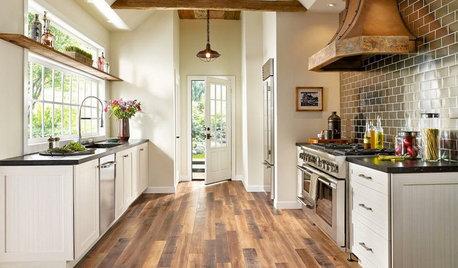
MOST POPULARPros and Cons of 5 Popular Kitchen Flooring Materials
Which kitchen flooring is right for you? An expert gives us the rundown
Full Story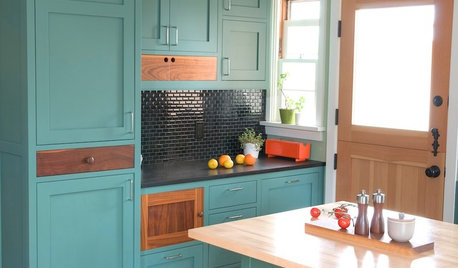
KITCHEN CABINETSKitchen Cabinet Color: Should You Paint or Stain?
Learn about durability, looks, cost and more for wooden cabinet finishes to make the right choice for your kitchen
Full Story
MATERIALSInsulation Basics: What to Know About Spray Foam
Learn what exactly spray foam is, the pros and cons of using it and why you shouldn’t mess around with installation
Full Story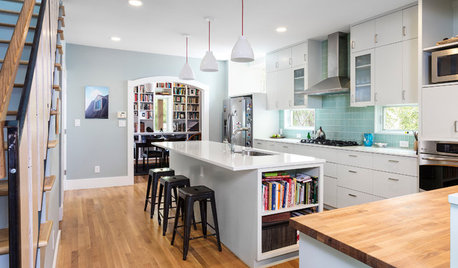
MOST POPULAR6 Kitchen Flooring Materials to Boost Your Cooking Comfort
Give your joints a break while you're standing at the stove, with these resilient and beautiful materials for kitchen floors
Full Story
MOST POPULARContractor Tips: Top 10 Home Remodeling Don'ts
Help your home renovation go smoothly and stay on budget with this wise advice from a pro
Full Story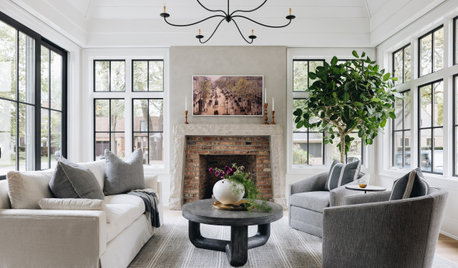
FURNITUREHow to Buy a Quality Sofa That Will Last
Learn about foam versus feathers, seat depth, springs, fabric and more for a couch that will work for years to come
Full Story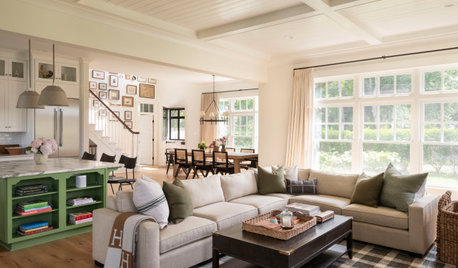
FURNITUREYour Essential Sofa Buying Guide
Here’s what to consider when looking for a quality sofa that will last
Full Story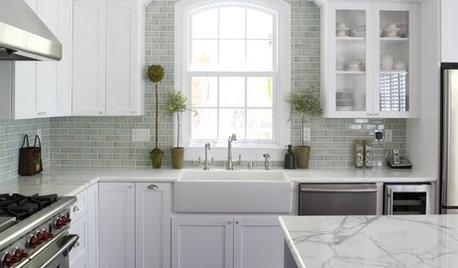
INSIDE HOUZZA New Houzz Survey Reveals What You Really Want in Your Kitchen
Discover what Houzzers are planning for their new kitchens and which features are falling off the design radar
Full Story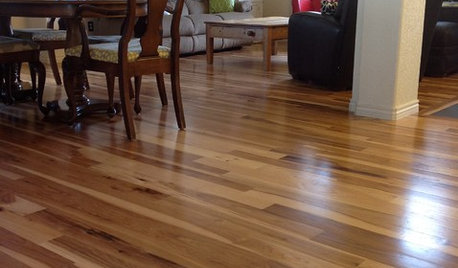
MATERIALSWhat to Ask Before Choosing a Hardwood Floor
We give you the details on cost, installation, wood varieties and more to help you pick the right hardwood flooring
Full Story
REMODELING GUIDESYou Won't Believe What These Homeowners Found in Their Walls
From the banal to the downright bizarre, these uncovered artifacts may get you wondering what may be hidden in your own home
Full Story


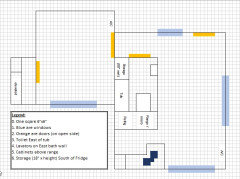




Ashleah CourtneyOriginal Author